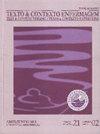SPATIAL-TEMPORAL DISTRIBUTION AND FACTORS ASSOCIATED WITH HIV/AIDS MORTALITY AMONG YOUNG PEOPLE IN NORTHEASTERN BRAZIL
Q2 Nursing
引用次数: 0
Abstract
ABSTRACT Objective to analyze the spatial-temporal distribution and factors associated with HIV/AIDS mortality among young people in the Northeast from 2001 to 2020. Method ecological study with 2,509 deaths from HIV/AIDS from northeastern residents aged between 10 and 24 years of age, reported in the Mortality Information System. Temporal analysis techniques (Joinpoint) and detection of spatial clusters (Spatial Autocorrelation, Gets-Ord Gi* and Scan were used. Three spatial error and spatial lag (Spatial Error and Spatial Lag) and non-spatial regression models (Ordinary Least Squares-OLS) were used to identify the factors associated with mortality in northeastern municipalities, considering p<0.05. Results the HIV/AIDS mortality rate among young people in the northeast was 0.4 deaths per 100,000 inhabitants. Maranhão (APC:7.1; CI95%:2.3-12.1), Sergipe (PcA:6.9; CI95%:1.8-12.2), Rio Grande do Norte (PcA:6.4; CI95%:1.8-11.2), Ceará (PcA:4.2; CI95%:1.5-7.0) and Alagoas (APC:3.2; CI95%:0.1-6.4) showed a significant increasing trend of deaths. Cluster detection techniques indicated clusters of deaths mainly on the coast of Pernambuco and north-central Maranhão. The indicators proportion of the population in households with density >2 (β=0.012; p<0.001) and per capita transfer of the continued benefit (β=0.000; p<0.001) showed a positive relationship with the outcome. On the other hand, the proportion of extremely poor people (β=-0.011; p=0.029) and the Brazilian Deprivation Index (β=-0.195; p=0.009) were negatively associated with mortality. Conclusion there was a trend of increased mortality in five of the nine northeastern states. The spatial clusters were located mainly in Pernambuco and North-Central Maranhão. Interventions aimed at socioeconomic factors should be established to prevent HIV infections and deaths among young people.巴西东北部年轻人艾滋病毒/艾滋病死亡率的时空分布和相关因素
[摘要]目的分析2001 - 2020年东北地区青少年艾滋病死亡率的时空分布及影响因素。方法对中国东北地区2509例10 ~ 24岁HIV/AIDS死亡病例进行生态学研究。采用时间分析技术(Joinpoint)和空间聚类检测技术(spatial Autocorrelation, Gets-Ord Gi*和Scan)。采用3个空间误差和空间滞后模型(spatial error and spatial lag)和非空间回归模型(Ordinary Least Squares-OLS),考虑p2 (β=0.012;P <0.001)和人均持续收益转移(β=0.000;P <0.001)与预后呈正相关。另一方面,极端贫困人口比例(β=-0.011;p=0.029)和巴西剥夺指数(β=-0.195;P =0.009)与死亡率呈负相关。结论:美国东北部9个州中有5个州的死亡率呈上升趋势。空间集群主要分布在伯南布哥省和马兰赫州中北部。应制定针对社会经济因素的干预措施,以预防青年人感染艾滋病毒和死亡。
本文章由计算机程序翻译,如有差异,请以英文原文为准。
求助全文
约1分钟内获得全文
求助全文
来源期刊

Texto Contexto Enfermagem
Nursing-General Nursing
CiteScore
1.80
自引率
0.00%
发文量
85
审稿时长
>12 weeks
期刊介绍:
Texto & Contexto Enfermagem provides space for reflection and deepening of knowledge about issues of practice, teaching and research in health and nursing, at national and international levels.
The journal is published quarterly in the rolling pass or Continuous flow mode, accepting manuscripts in Portuguese, English or Spanish, in the categories original article, reflection, experience report and review. Contributions designated to the dissemination of unpublished original research results are prioritized for publication. Special issues are published at the discretion of the Board of Directors and Associate Editors. All manuscripts are published in two versions, one of which is English, aiming to cover the largest number of readers worldwide.
The editorial policy of Texto & Contexto Enfermagem is based on rigorous quality criteria for indexing and publishing (including technical and normative aspects, graphic and textual quality and excellence in scientific content); on responsibility for shared management between the Board of Directors, Editorial Board and Internal and External Editors Associates; and on the rigorous and constructive peer review, preserving the anonymity of authors and reviewers (double blinded).
 求助内容:
求助内容: 应助结果提醒方式:
应助结果提醒方式:


